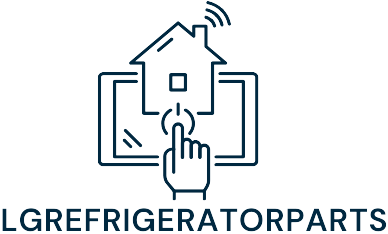Table of Contents
ToggleWhen life throws a financial curveball, it can feel like you’re trapped in a game of Monopoly where you keep landing on Boardwalk with no cash in hand. Enter loan modification programs, the superhero in your mortgage saga. These programs can help you negotiate better terms, reduce monthly payments, or even lower your interest rate. Who wouldn’t want a financial sidekick to save the day?
Overview of Loan Modification Programs
Loan modification programs provide homeowners with an opportunity to adjust their mortgage terms. These adjustments can make monthly payments more manageable and stabilize financial situations.
Definition of Loan Modification
Loan modification refers to a permanent change in the terms of an existing mortgage. Modifications may include alterations to the interest rate, loan term, or monthly payment amounts. Programs can apply to various loan types, including FHA, VA, and conventional loans. Homeowners typically must demonstrate financial hardship to qualify for modifications, aiming to make loans sustainable in the long run.
Purpose and Benefits
The primary purpose of loan modification programs is to prevent foreclosure and help homeowners retain their properties. Benefits often include lower monthly payments, reduced interest rates, or extended repayment periods. Homeowners facing temporary financial setbacks can find relief through these programs, allowing them to regain stability. Additionally, modifications can improve credit scores by preventing mortgage defaults and delinquencies. Access to these programs can lead to considerable savings, providing essential support during challenging times.
Types of Loan Modification Programs
Loan modification programs come in various forms, catering to different situations and needs. Understanding each type helps homeowners find suitable solutions for their financial challenges.
Federal Programs
Federal programs are often designed to support struggling homeowners. Programs like the Home Affordable Modification Program (HAMP) offer viable options for those facing financial hardship. Homeowners may modify their loan terms, including interest rates and monthly payments. Support also comes from agencies such as the Federal Housing Administration (FHA), which promotes affordable lending solutions. These federal initiatives typically require proof of hardship, ensuring eligibility for those in genuine need.
State-Specific Programs
State-specific programs cater to unique local economic conditions. Many states operate their own assistance initiatives to provide relief to borrowers. For instance, states might offer programs aimed at reducing property taxes or providing grants. These programs often enhance federal offerings by addressing localized challenges in the housing market. Eligibility criteria may vary based on income levels and residency requirements, allowing tailored support for residents in distress.
Private Lender Programs
Private lender programs extend options beyond federal and state offerings. Various banks and financial institutions may develop their own modification arrangements. These programs can include interest rate reductions, extending loan terms, or reducing principal balances. Flexibility often results from competitive market conditions, allowing lenders to create attractive solutions. Borrowers may negotiate directly with their lenders, making it crucial to review available options thoroughly.
Eligibility Criteria
Eligibility for loan modification programs often hinges on specific financial conditions and documentation. Understanding these criteria helps homeowners navigate the process effectively.
Financial Considerations
Homeowners must demonstrate a genuine financial hardship to qualify. This hardship can stem from factors like job loss, reduced income, or unexpected medical expenses. Lenders typically evaluate monthly income against monthly expenses to assess eligibility. A net income-to-debt ratio under 43% often indicates eligibility for modifications. Homeowners facing foreclosure risk may find additional urgency in applying to these programs. Saving funds through lower monthly payments significantly contributes to financial stability, especially during challenging times.
Documentation Requirements
Submitting appropriate documentation is crucial for loan modification applications. Homeowners usually need to provide proof of income, such as pay stubs or tax returns, to demonstrate their financial situation. A comprehensive hardship letter explaining the circumstances also strengthens the application. Additionally, lenders may require recent bank statements to assess overall financial health. Each lender sets specific standards, so check with them for exact documentation needs. Missing or incomplete documents can delay the process and hinder eligibility.
Application Process
Applying for a loan modification involves several critical steps and potential challenges. Understanding these can enhance the likelihood of success.
Steps to Apply
First, homeowners should gather necessary documentation including proof of income and bank statements. Next, they must complete the modification application form provided by their lender. It’s essential to include a hardship letter detailing the financial difficulties faced. After submitting the application, lenders review the information, and a decision usually takes 30 to 90 days. Regular follow-ups help ensure appropriate consideration and timely processing. Staying organized throughout the entire process often leads to smoother interactions with the lender.
Common Challenges
Homeowners frequently encounter challenges during the application process. Obtaining all required documents can become overwhelming, especially under stress. Delays occur when documentation is incomplete or missing, leading to frustration. Lenders may require additional information, adding to the timeline. Misunderstanding eligibility criteria can result in wasted time and resources. Financial hardships may vary, complicating applications if not clearly explained. Unexpected outcomes from the lender might discouragement applicants, but persistence often proves beneficial.
Pros and Cons of Loan Modification Programs
Loan modification programs offer benefits and drawbacks for homeowners facing financial challenges. Evaluating these aspects helps in making informed decisions.
Advantages
Loan modification programs provide several significant benefits. They often result in lower monthly payments, making housing more affordable for struggling homeowners. Homeowners can also benefit from reduced interest rates, which can decrease overall loan costs. These modifications contribute to increased financial stability, helping families avoid foreclosure. Moreover, improved credit scores can arise from consistent payments following a modification. Homeowners may appreciate the extended repayment periods, allowing more manageable budgets for daily expenses. Accessing federal, state, or private programs opens up various options tailored to specific situations.
Disadvantages
Despite the advantages, loan modification programs present potential downsides. Homeowners may face rigorous eligibility requirements, with many needing to demonstrate verifiable financial hardship. The application process can become lengthy and cumbersome, often taking 30 to 90 days for processing. Throughout this period, stress levels may increase due to uncertainty about the outcome. Missing documentation can lead to delays or denials, causing frustration for applicants. Additionally, not all modifications are permanent, and some homeowners might find themselves facing further financial challenges. Understanding these limitations is crucial to navigating the modification landscape effectively.
Loan modification programs offer a valuable lifeline for homeowners grappling with financial hardships. By adjusting mortgage terms and making payments more manageable, these programs can significantly alleviate stress during tough times. Homeowners should take the time to explore the various options available and understand the eligibility criteria to find the best fit for their situation.
Persistence in the application process is crucial as it can lead to successful outcomes. While challenges may arise, the potential benefits far outweigh the drawbacks. With the right support and information, homeowners can navigate the complexities of loan modification programs and work towards regaining financial stability.



